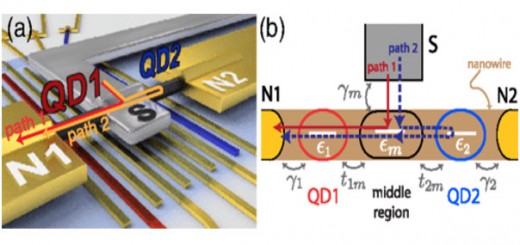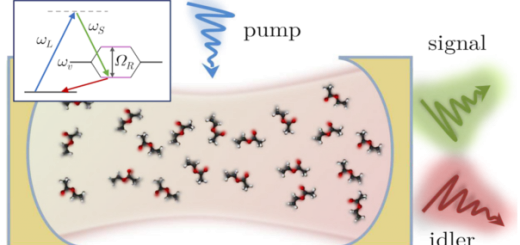Nonequilibrium Phase Transition in a Two-Dimensional Driven Open Quantum System
 Article: published in Physical Review X by Francesca M. Marchetti, Department of Theoretical Condensed Matter Physics and IFIMAC researchers.
Article: published in Physical Review X by Francesca M. Marchetti, Department of Theoretical Condensed Matter Physics and IFIMAC researchers.
There cannot be absolute order in a two-dimensional fluid because disorder-causing mechanisms are exceptionally strong. Nevertheless, there can be an enormous difference between systems of lesser and greater order (e.g., between an ordinary fluid such as water and a superfluid such as liquid helium). The latter can flow without any friction and even escape up and over its container walls. The transition between superfluid and normal behavior in two dimensions, even for closed systems that are allowed to equilibrate, is particularly dramatic: It is caused by the appearance of a large number of topological defects in the form of vortices—tiny tornadoes—that destroy the more ordered state. An open question is what causes the transition for particles that cannot be perfectly trapped and equilibrated in any container, such as photons. Their inevitable escape has to be counterbalanced by an external influx to keep the situation steady. We find that the transition is still caused by proliferating tornadoes.
We focus on a quantum fluid of polaritons, and our analysis, based on a stochastic field formalism, accounts for topological defects and fluctuations. Surprisingly, we find that systems that are externally disturbed can remain a superfluid in an overall less-ordered state than their equilibrium counterparts. Whether these systems are more robust to vortex proliferation or simply more disordered by collective fluctuations remains to be determined. This externally overshaken-but-not-stirred quantum fluid clearly constitutes an interesting new laboratory to explore nonequilibrium phases of matter.
We expect that our results will motivate future studies of nonequilibrium phase transitions in driven-dissipative systems, in particular, optical ones. [Full article]


















